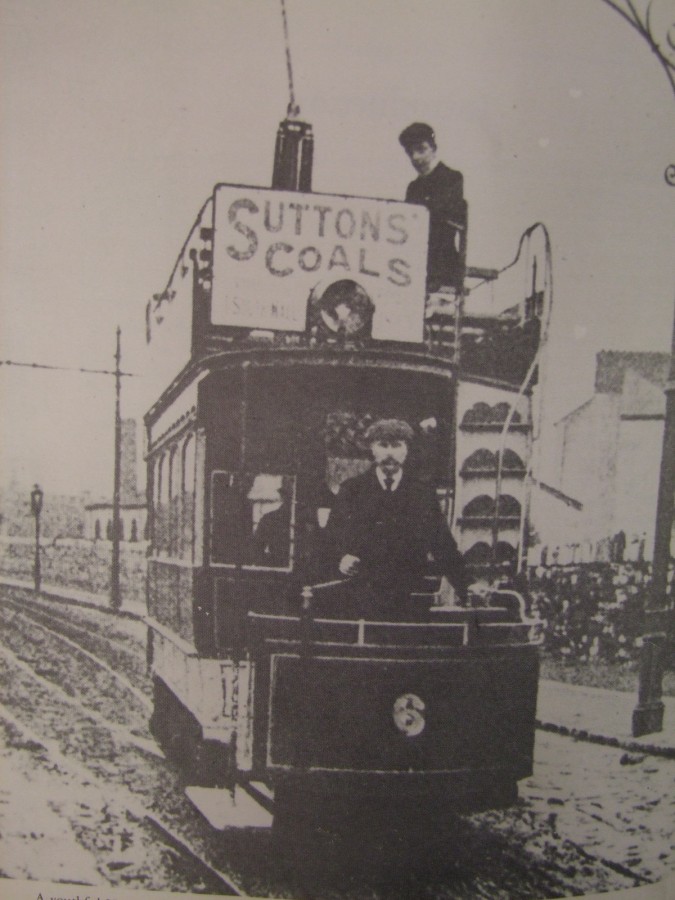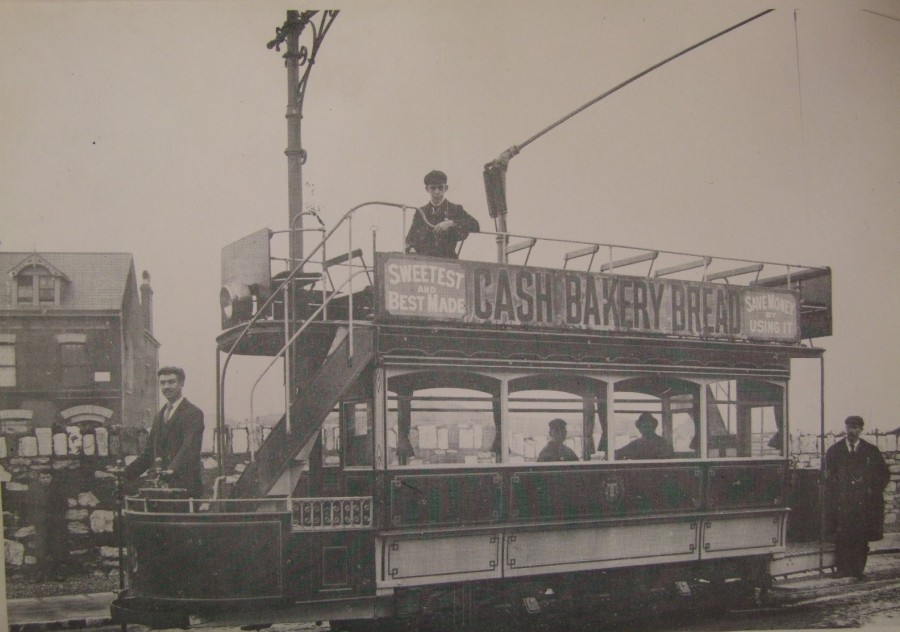Kieran’s Our City, Our Town Article,
Cork Independent, 20 June 2019
Tales from 1919: Tram Tracks Through a City
On the second week of June 1919, a strike of the Cork tramway employees occurred, which threatened to cause a serious dislocation in transport movement in the city. Recorded in the Cork Examiner in May 1919 the employees put in their claim on the lines of the national demand for a weekly wage of 50s and a 49-hour week. The notice expired on Saturday 6 June but on the timely intervention of Capuchin priest Fr Thomas Dowling, he recommended the men to lay their claims and concerns before a conciliation board. In the meantime, the men agreed to continue working.
Fr Thomas had a great interest in social reform especially in the work of mediation and arbitration between employers and trade unions. In late February 1919, he succeeded in establishing a Cork Conciliation Board and was its first president. It consisted of four delegates from the Employers’ Federation and four appointed by the Cork and District Trade and Labour Council.
The request for an increase in the wage of the tram workers came before the conciliation board on 10 June at a special meeting at 7pm held at the Fr Mathew Hall, where Fr Thomas presided. Mr Edward Lynch of the Transport Workers represented the men, and Mr N H Nalder and Mr Whiting appeared for the Cork Electric and Lighting Company. An award of 4s per week increase with a reduction in working hours was agreed upon, and this finding was tentatively ratified at the meeting.
In the first two decade of the 1900s, the electric trams of Cork City played a large part in providing much needed public transport. Professional men living in the suburbs and working in the city used the service regularly. On the other side of the social scale, city dwellers such as domestic services with jobs in the large houses in the suburbs travelled out using the trams.
In 1919, 35 electric tram cars operated throughout the city and suburbs. These were manufactured in Loughborough, UK. All were double deck in nature, open upstairs with a single-truck design. There were minor variations in many of the cars. Six of the trams had a luxury design. They had a longer roof and their ends were curved, which provided extra seating upstairs and a cover for the driver and conductor. Passengers on the lower level sat on two long slated timber seats.
The various routes totalled 12 miles, starting from a common centre at the Father Mathew Statue on St Patrick’s Street, and radiating from this to the various termini at Sunday’s Well, Summerhill, Blackpool, Douglas, Tivoli, and Blackrock. Large white indicator boards at the front of the trams identified their destination. These had the initials of the terminus or where the tram was travelling. For example, Blackpool was shown by BP and Douglas by DS. By 1919, small rectangular plates in different colours replaced the boards. Each displayed the full name of the destination. The name was located over the numbers and on the side of the cars as follows; Douglas-white; Blackrock-brown, Tivoli-yellow; Sunday’s Well and Summerhill-red and Blackpool-dark blue. To identify clearly the trams at nights, the relevant officials fitted lighted bulbs of the different colours. Instead of a brown bulb for Blackrock, a green bulb was used.
On the majority of the routes, there were outbound and city bound tram tracks. However, on a number of routes, especially the Douglas and Blackrock routes, single-track sections were in operation. Thus, when the driver reached the end of the loop and therefore, the entry to a single-track section, he left his platform. He then went to a box on an adjacent pole, flicked a switch, which turned on a light on the pole at the other end of the track. This warned any drivers of any approaching trams.
The annual general meetings for the Cork Electric Tramways Company in the decade of the 1910s reveal ongoing maintenance. In 1913 increases in station expenses were witnessed mainly because of coal and maintenance of the plant. The system of supply was direct current, at a pressure of 500 volts taken from an overhead line by the trolley of the tram cars, the power being generated at the Company’s generating station at Albert Road (now the National Sculpture Factory). There were also lighting and power expenses for maintaining cables on streets. In 1916 it is recorded at the company’s AGM that one of the original 225 KW generating sets, was replaced. This small set has had to be removed to provide space for a new turbine, which was to provide extra voltage capacity.
During the First World War, stores of fuel materials were stocked up – over £1,400 worth of coal to make sure fuel shortage did not become an issue. Despite war conditions the fares charged were still amongst the lowest between Britain and Ireland. For example, from the Statue to Blackrock, the distance was 3.3 miles with a single fare, 2d. Circa 1900, a single fare to any of the suburbs served by the trams was one penny. The fare did rise up to three and half pence by 1910 but had dropped to two pence by 1930.
In 1919, the tram cars ran from 7.45 am to 11.20 pm, with intervals varying from 6 minutes on the Summerhill and Sunday’s Well routes, to 10 minutes on the Douglas and Blackrock routes. Since the system was started in 1898 the Cork Electric and Lighting Company had, on an average, carried about 6 million passengers per year.
Kieran’s Next Walking Tours:
Saturday, 22 June, The Friar’s Walk; historical walking tour with Kieran; Discover Red Abbey, Elizabeth Fort, Barrack St, Callanan’s Tower & Greenmount area; Meet at Red Abbey tower, off Douglas Street, 11am; free, duration: two hours.
Sunday 23 June, The Lough & its Curiosities; historical walking tour with Kieran, explore the local history from the Legend of the Lough to suburban development; meet at green area at northern end of The Lough, entrance of Lough Road to The Lough; 2.30pm (free, duration: two hours).
Captions:
1002a. N H Nalder on upper deck of no.6 on Albert Road (c.1900) from W McGrath’s Tram Tracks Through Cork (source: Cork City Library).
1002b. A sleepy Douglas Village with tramcar, c.1901 from W McGrath’s Tram Tracks Through Cork (source: Cork City Library).

